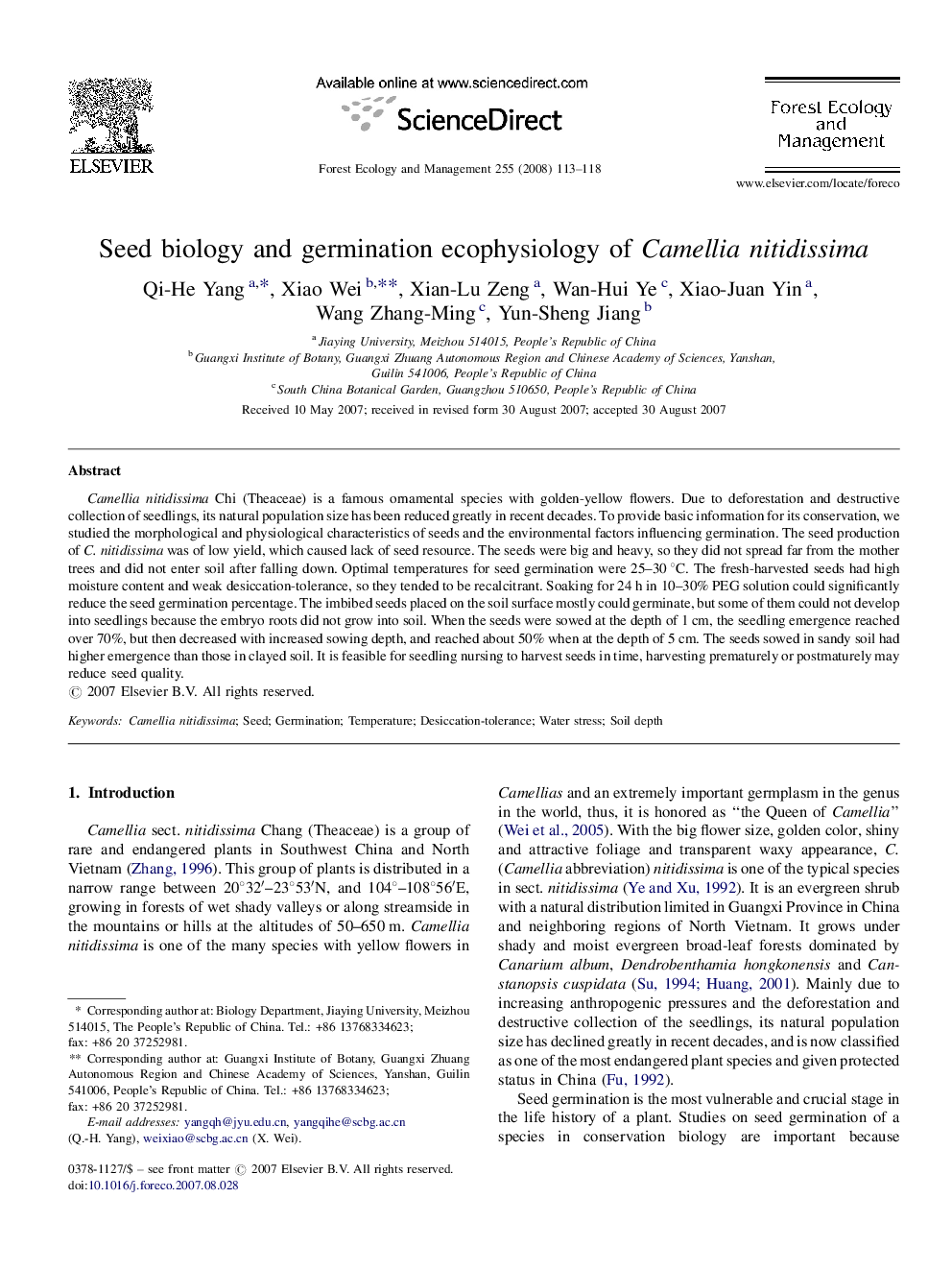| Article ID | Journal | Published Year | Pages | File Type |
|---|---|---|---|---|
| 89588 | Forest Ecology and Management | 2008 | 6 Pages |
Camellia nitidissima Chi (Theaceae) is a famous ornamental species with golden-yellow flowers. Due to deforestation and destructive collection of seedlings, its natural population size has been reduced greatly in recent decades. To provide basic information for its conservation, we studied the morphological and physiological characteristics of seeds and the environmental factors influencing germination. The seed production of C. nitidissima was of low yield, which caused lack of seed resource. The seeds were big and heavy, so they did not spread far from the mother trees and did not enter soil after falling down. Optimal temperatures for seed germination were 25–30 °C. The fresh-harvested seeds had high moisture content and weak desiccation-tolerance, so they tended to be recalcitrant. Soaking for 24 h in 10–30% PEG solution could significantly reduce the seed germination percentage. The imbibed seeds placed on the soil surface mostly could germinate, but some of them could not develop into seedlings because the embryo roots did not grow into soil. When the seeds were sowed at the depth of 1 cm, the seedling emergence reached over 70%, but then decreased with increased sowing depth, and reached about 50% when at the depth of 5 cm. The seeds sowed in sandy soil had higher emergence than those in clayed soil. It is feasible for seedling nursing to harvest seeds in time, harvesting prematurely or postmaturely may reduce seed quality.
